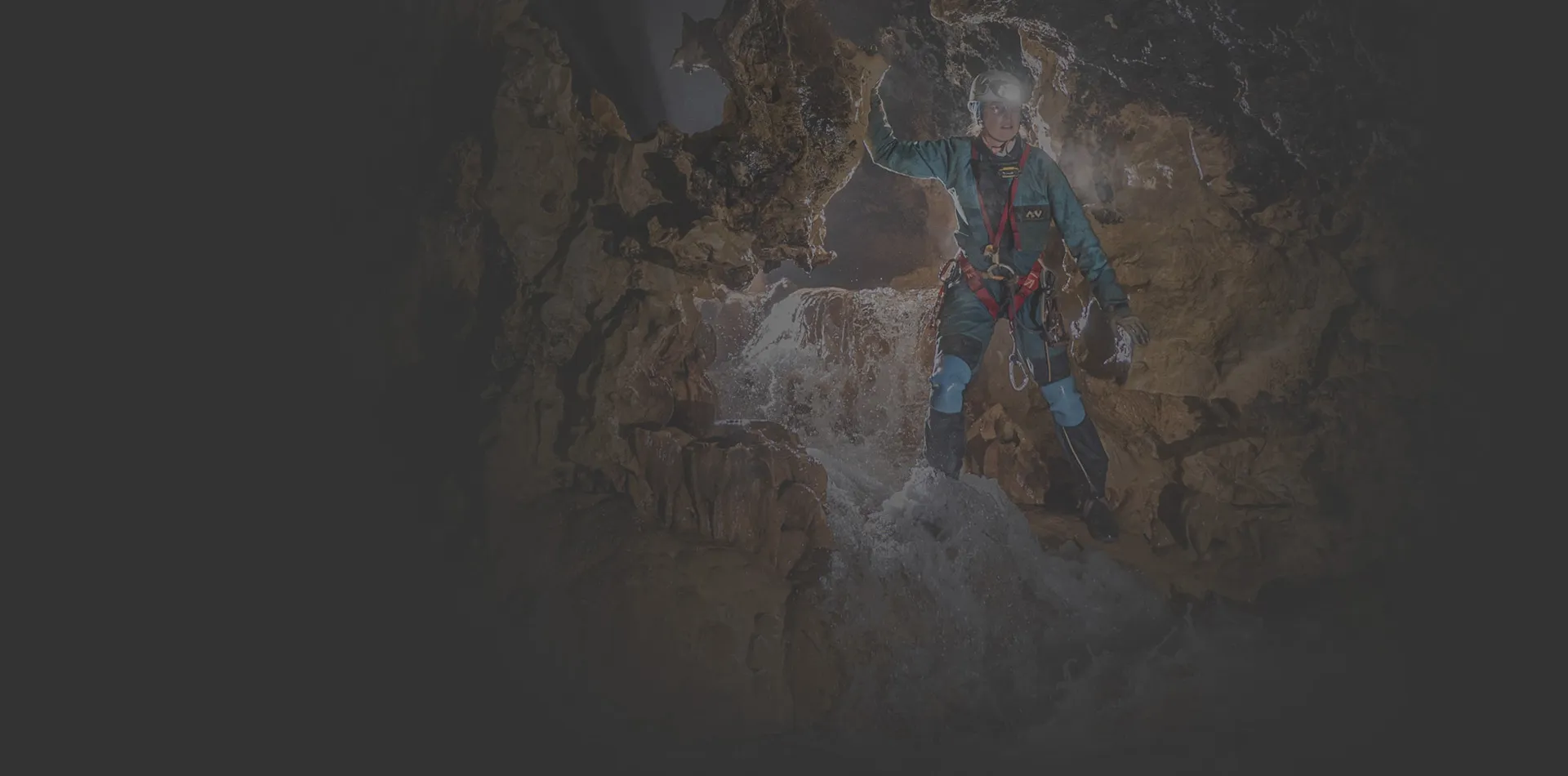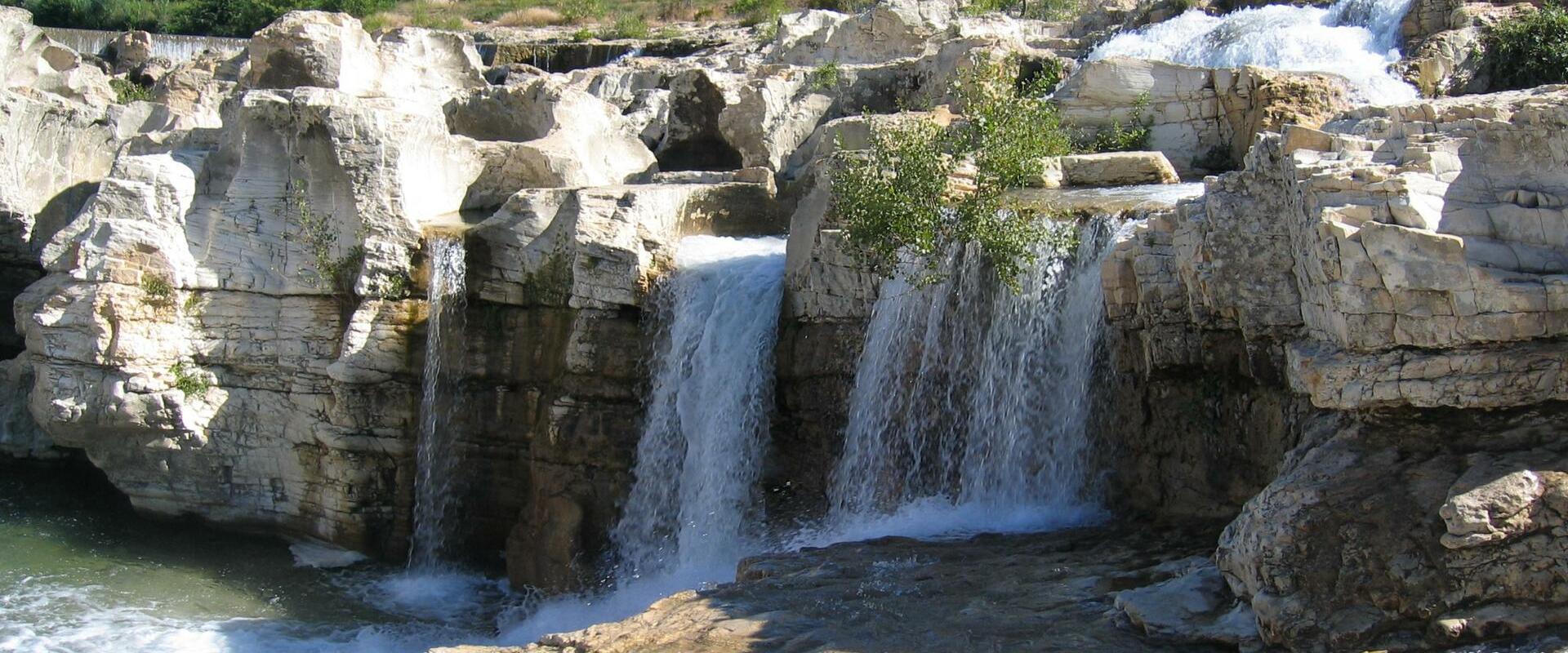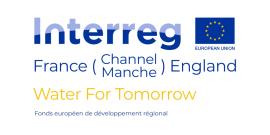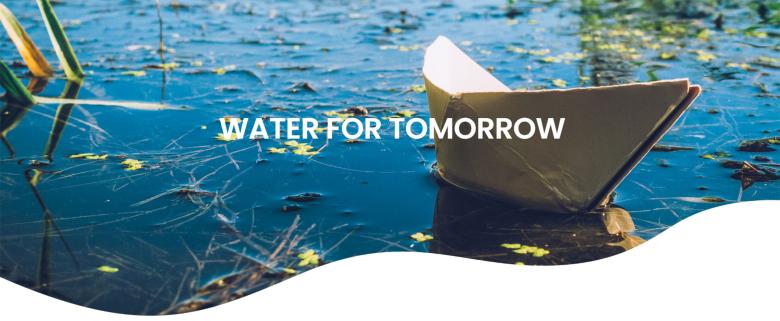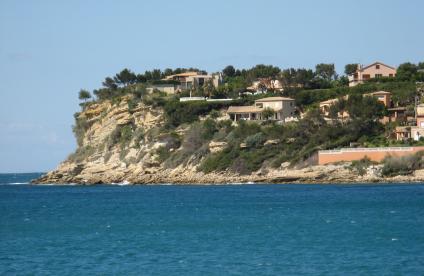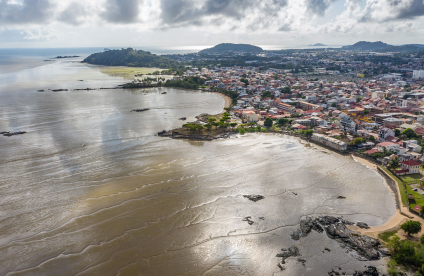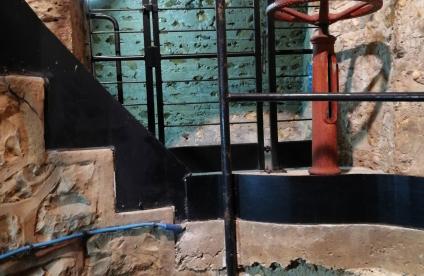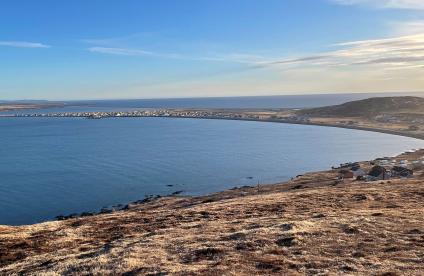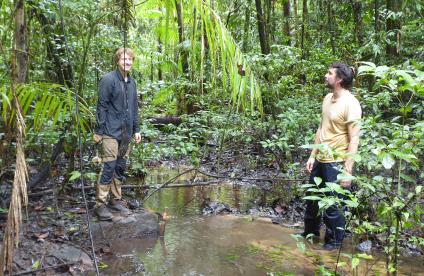Water for Tomorrow was a cross-border partnership of 5 organisations in England and France which will develop and test innovative water management tools and decision-making support systems. These enable more responsive short-term management of drought events, and better long-term planning, as well as investment in water management at a local scale.
The aim of the project was to achieve:
- New data collection methods, hydro-economic models and new software to improve water allocation and early warning of water scarcity.
- Multi sector collaboration that supports the uptake and roll out of these systems and use of smart technologies in the management of water resources across the FCE area.
This €4 million project was funded through the EU INTERREG VA France (Channel) England Programme which has committed €2.8million through the European Development Fund. The project ended in March 2023.
Five pilot sites have been defined, three in England and two in France:
- Broadland Rivers, England
- Cam & Ely Ouse, England
- East Suffolk, England
- Sud Finistère, France
- CABBALR, France
BRGM's role
BRGM Brittany has expertise and advanced skills in the study and management of groundwater and other associated hydraulic compartments. The “New Water Resources and Economy” division in Montpellier, also involved in the Water for Tomorrow project, makes it possible to develop appropriate economic approaches to meet the new needs of integrated water management and more generally of the environment and geo-resources.
Publications
Mougin B., Bourgeois C., Manlay A., Neverre N. (2023). Comment passer de la prévision des sécheresses hydrogéologiques à leur gestion anticipée ? Utilisation de MétéEAU Nappes dans un aquifère crayeux du Nord de la France. La Houille Blanche. https://doi.org/10.1080/27678490.2023.2282073

"Sud Finistère" pilot site
The Syndicat Mixte de l'Aulne (SMA) plays a role in assuring the security of the drinking water supply (AEP) to the South-Western quarter of the Finistère (Brittany). It covers an area of 1300km² and includes 5 EPCI’s, which combine nearly 180,000 users, and will soon expand to a 6th EPCI. Each of these areas has its own resources and calls on the SMA for permanent supply or for ad-hoc security.
This pilot site is home to several stakeholder groups making use of the drinking water supply: agriculture (livestock), industry, a growing tourism industry, and a growing population, linked to coastalisation. These growing needs are coupled with a decrease in the availability of water resources and it is possible that the AEP networks will not be able to meet everyone’s needs in the future.
The multitude of sampling points and the collective security role of the SMA justify thinking about the sustainable management of resources in an all-round way on this pilot site, for greater efficiency.
Water for Tomorrow - South Finistère pilot site: securing the drinking water supply
Transcription
In Brittany, drinking water was provided by small associations and communal services exploiting local resources. These local resources became insufficient to meet the growing demand, especially in coastal areas. We thus developed networks to transfer to these areas drinking water produced from major rivers or reservoirs. This strategy, which has been effective for almost 30 years, may become insufficient as consumption increases, droughts become more intense and more frequent and local resources are abandoned when contaminated by pesticides. All the ingredients of this situation are found in southeast Finistère, where the water supply was secured in the late '80s by a network of large-diameter pipes serving six communities with drinking water produced in Châteaulin from the Aulne river. The supply infrastructure is managed by the Syndicat Mixte de l'Aulne. The Syndicat Mixte de l'Aulne was set up by local authorities, and with its solid resources, notably the Saint-Michel reservoir, offered almost guaranteed low-water support, at least until now. It allows everyone to help each other in summer when their own resources dry up, so it is an indispensable tool that has already prevented water shortages in the territory. In the area around the Crozon peninsula, the Syndicat Mixte de l'Aulne is used little in winter, but a lot in summer. The proportion rises such that up to 80% of our water comes from the Syndicat Mixte in the months of July, August and the first half of September. It's clear how crucial this is and how much we depend on the Syndicat and this tool. Until now, we have given low-water-level support from the Saint-Michel reservoir, which is 13 million cubic meters, 10 million of which are usable for low-water support if it is full. That's a large capacity. However, it is not unlimited. In certain years, such as 2017, we have trouble filling the reserve. We wondered about how secure supplies were, given the intensifying effects of climate change. So we collectively sought, with all water stakeholders, to carry out an overall review and take a step back. The issue of climate change has no borders: it doesn't concern one territory but not another. We need to realize that the issue of resource scarcity will concern everyone. The effects will vary from sector to sector, but faced with these challenges, we need to be united with a single objective when dealing with it. The Water For Tomorrow project will help the key figures in this territory to plan ahead. The aim is to help them develop more collective strategies to cope with water management. The thinking will focus on developing a model, but above all on consultation between elected officials, technicians and scientists.
Water for Tomorrow - South Finistère pilot site: 1st consultation workshop
Transcription
We wanted to gather everyone involved in supplying water around a table to share knowledge on management issues encountered in their region, plus knowledge about available resources and their water consumption. The association has about ten members. I learned things today, even though we have been neighbors with our counterparts for 20 years. We are finding out about problems. The real advantage of this project is that it will highlight the fact that we need to act together. We found that all stakeholders share certain issues across their territories, notably the problem of pollution from phytosanitary agents, mostly metabolites of pesticides. Also the problem of water availability, especially in prolonged periods of low water, and the need to ensure supplies of drinking water. The workshops help us better understand our aims and focus work on the objective. Because in reality, there is only one objective, not ten: how to assist each other with supplying water. The workshops will help us get to the heart of the matter. Those taking part were eager to continue with further workshops to continue the development of the participatory process. This consultation will continue over the next 12 months, through a further series of workshops at which together we will try to establish a set of adaptation scenarios whose impact we will assess with the hydro-economic model developed in the meantime.
Water for Tomorrow - site pilote du Sud Finistère : drinking water supply model
Transcription
In the Syndicat Mixte de l'Aulne's territory, the issue of resilience in drinking-water supplies arises as the demand and availability of resources evolves. Under these conditions, communities' requirements from their Aulne resource are likely to increase. But the resource will itself be affected by climate change. Given the importance of this resource across the Département, it makes sense to have a tool to help us forecast crises, or at least react better to them. Because we will definitely have crises. That's why we have built a hydro-economic model representing drinking-water supplies across the territory, secured by the Syndicat Mixte de l'Aulne. To build this model, first we identified all available resources, then schematized how water can be sent to municipalities to satisfy their requirements. To that end, we solicited local stakeholders to see which resources can meet which demands, taking into account territorial interconnections. We also needed to characterize all the constraints that impact production capacity: the technical or regulatory factors that affect the collection capacity, treatment or transportation of water. There may also be constraints on resource availability. This is the Kergamet site. We have two boreholes and a small catchment area with a main well. On this site, the resources are very impacted by low-water periods. Starting in mid-July, we have problems in the catchment area as it is a very superficial resource. We then use borehole water in greater quantities. What we can also do is import water from resources close to Saint-Avé. We can also take water from Syndicat Mixte de l'Aulne resources and thus maintain water supplies in part of our territory during low-water periods or when our resources are problematic. A particular aspect of the SMA is that, as with the entire Brittany region, we are on substratum aquifers of schist and granite with relatively limited reserves compared to large sedimentary aquifers. On this type of aquifer, we see levels rise in the water table during the charging period, which then decrease throughout the year, reaching a minimum during the August-September period. This implies a subsequent decrease in the most superficial resource production. These individual elements are taken into account in the model for each resource, whether a well, borehole or superficial resource. This computerized hydro-economic model can simulate the impact of a range of scenarios. For each scenario, the model will seek to optimize the organization of the territory's drinking-water supplies to best satisfy water needs according to production capacities. The model will thus determine how feasible it is to meet water requirements in a particular scenario. There is much to recommend modeling for this type of study. The most important aspect is the ability to combine a much wider range of scenarios than is possible using traditional methods. The tool's ability to simulate these clashes and overlaps of scenarios and settings allows more precise identification of areas of fragility and vulnerability in this part of the Département.
Water for Tomorrow - South Finistère pilot site: Anticipating future vulnerabilities
Transcription
The hydro-economic model we saw in the previous video can be used for prospecting. We imagined different scenarios for changes in resource quantity and quality depending on climate change, as well as changes in drinking-water consumption. This we did working with real stakeholders. Working Together to Create Scenarios for 2050 These are quality maps that factor in pesticide metabolites found in samples of drinking water. We're able to plug these data into the model. The problem is the cost of setting up treatment for small amounts, which puts us in fear of having to cut off, even if only periodically, our drinking water, if not abandon our resources due to high costs. From there, we can simulate the area's water supply factoring in these data and accounting for abandonment of the resource. We can then look at the state of the water supply after that. One thing we account for in these changing scenarios is climate change. We've created different scenarios depending on rainfall and drought, long and short periods of drought, by taking into account the impact of climate events on natural resources, bodies of water, aquifers, and maintained resources, such as dams, and reservoirs like at Brennilis. Scenarios of changing demand were created by changing variables like length of tourism seasons. A final scenario was created looking at the Aulne River in peril from pollution, which would endanger all of Finistère. What threatens water supply from now till 2050? This model is used to test the resilience of the water supply when confronted with different scenarios. Simulations are a way of identifying vulnerable areas and the level of vulnerability depending on volume and length of crisis. After modeling, we can create maps showing the various situations depending on water supply to different areas. More accurate indicators can explain causes of lack of water. For example, we can graph the amount of demand for water relative to capacity to compare differences. Overall, the results show there's abundant water supply during the summer. From there, any change in conditions, such as increased demand, long periods of low water, or a metabolite-treatment facility shut down will increase demand on the Aulne. The Aulne itself is also limited by various factors. Certain changes will reduce water resources by varying degrees across the region. Looking at different scenarios with the model and working alongside stakeholders was a means to establish focal points and weak points that I hadn't been able to see in certain areas. The simulations make concrete our vulnerability, we can sense it, but we don't necessarily know where it is. The results of the mapping show how strong our dependence is on the Aulne Joint Association and how much we need that resource in this area, and it makes understandable the past few years of public policy trying to find water in the Fouesnantais area because we need alternative water resources in the future for future generations, because they'll be faced with climate change. This way we can better manage the entire drainage basin the association handles to deliver water. The model offers a perspective. Some of it is somewhat intuitive, but we hadn't seen the real impact. Here, we can see situations concretely, risks, particular weaknesses, and potentially swift degradations in the future. We can look ahead to things we need to put in place. The simulations make us more aware of the reality on the ground, seeing how the different areas intermingle, and the impact that has on water management, while allowing us to have a better idea of how things will change in light of climatic and other events we can anticipate to reflect on democratic solutions across the region to clear these hurdles in the near future. Sharing the results across the region showed us our needs and uses. What one person does can affect another, so we have to share the information, the forecasts, and the solutions because we have to work together, we have to look out for each other. There are likely investments to be made. We'll have to deliberate, all of us together. It's important that everyone has a place at the table to speak. We want to use this method to bring together stakeholders and decide democratically which scenarios we'll have to face tomorrow, in 2030, 2040, and 2050, how to face those realities, and together decide which strategies are right for building regional resilience, sharing this resource, and working together in a strategic way that lets everyone use water the same way with guaranteed access to everyone in the region.
Water for Tomorrow - South Finistère pilot site: Towards a collective management strategy
Work completed
On the Sud-Finistère pilot site, a participatory approach has been implemented with local water management stakeholders to build a collective strategy for securing the drinking water supply. This approach was based on the joint construction and participative use of a hydro-economic model of the drinking water supply. This exploratory decision-making tool can be used to assess the impact of different scenarios over the medium to long term.
Firstly, it was used to anticipate resource deficits in relation to needs in various future development scenarios (changes in resource availability, changes in demand for drinking water). The risks of drinking water supply failure have been quantified and located.
Secondly, the model was used to assess the effectiveness of different adaptation measures and combinations of measures to address anticipated vulnerabilities: managing demand, reducing leaks, increasing the resilience of local resources, interconnections, etc.
Combining modelling and participation, this approach has identified priority measures to be implemented for the region and consolidated a community of stakeholders who were not necessarily accustomed to working together.
View the Water for Tomorrow information pack booklets
-
Booklet 7: Évaluation de l’impact climatique sur les capacités de production des ressources en eau souterraines des aquifères de socle (Assessment of climate impact on the production capacity of groundwater resources in basement aquifers)(PDF, 1 MB)
-
Booklet 13: Anticiper les besoins de sécurisation des systèmes d’alimentation en eau potable : construction d’un modèle hydro-économique (Anticipating the need to secure drinking water supply systems: building a hydro-economic model)(PDF, 4 MB)
-
Booklet 14: Allier démarche participative et modélisation pour construire une stratégie collective de sécurisation de l’alimentation en eau potable (Combining a participative approach and modelling to build a collective strategy for securing the drinkin(PDF, 5 MB)

"CABBALR" pilot site
Water has not been a major concern historically on the pilot site of CABBALR, due to the abundance from one of Europe’s largest aquifers (La nappe the la Craie) and a variety of water management authorities in the area.
Nonetheless, droughts from 2017 to 2019 have led to a decline in piezometric levels, which could be sustained with climate change. At the same time, uses are changing: there is an increased demand for water by the agricultural sector, industrial areas are expanding, as is urbanization.
CABBALR is therefore seeking to better predict the future evolution of water resources and needs in order to integrate them into its area development strategy and better prepare for emergency situations.
Water for Tomorrow - "CABBALR" pilot site: the challenges of water management on the territory
Work completed
On the CABBALR site, two components have been implemented: a "long-term balance between resources and needs" component and a "drought forecast" component.
With regard to the "long-term balance between resources and needs" component, a participatory approach has been adopted with the water management stakeholders in the region in order to establish a common diagnosis of the balance between changes in groundwater resources and uses up to 2050. On the basis of workshops on future prospects and a survey of 101 farmers, future water use scenarios were drawn up for the drinking water, industrial and agricultural sectors. The regional model of the La Craie aquifer was then adapted to the CABBALR area to simulate the impact of climate change and changes in use on the resource. These simulations identified overall fluctuation trends in the La Craie aquifer and potential areas of future imbalance. On this basis, recommendations were made at a final workshop to improve local groundwater management.
In the "drought forecast" component, three piezometers in the CABBALR area were modelled and implemented in the web application MétéEAU Nappes. This provides 6-month drought risk forecasts at each of these points on the basis of climate and water abstraction scenarios. Two workshops were also held with various local stakeholders (mayors, water supply managers, farmers, industrialists, etc.). These workshops provided an opportunity to raise awareness of drought risks and to discuss various possible solutions to protect against them.
View the Water for Tomorrow information pack booklets
-
Booklet 4: Quelles évolutions de l’irrigation dans un futur proche ? Réalisation d’une enquête sur le territoire du bassin de la Lys (How will irrigation develop in the near future? A survey of the Lys catchment area)(PDF, 1 MB)
-
Booklet 6: Diagnostic de l’équilibre ressources-besoin à long-terme sur un territoire historiquement peu soumis aux sécheresses (Diagnosis of the long-term balance between resources and needs in an area not historically subject to droughts)(PDF, 2 MB)
-
Booklet 12: Adaptation précoce à la sécheresse : le potentiel de l’application web MétéEAU Nappes (Adaptating for anticipated droughts: the potential of the MétéEAU Nappes web application)(PDF, 3 MB)
